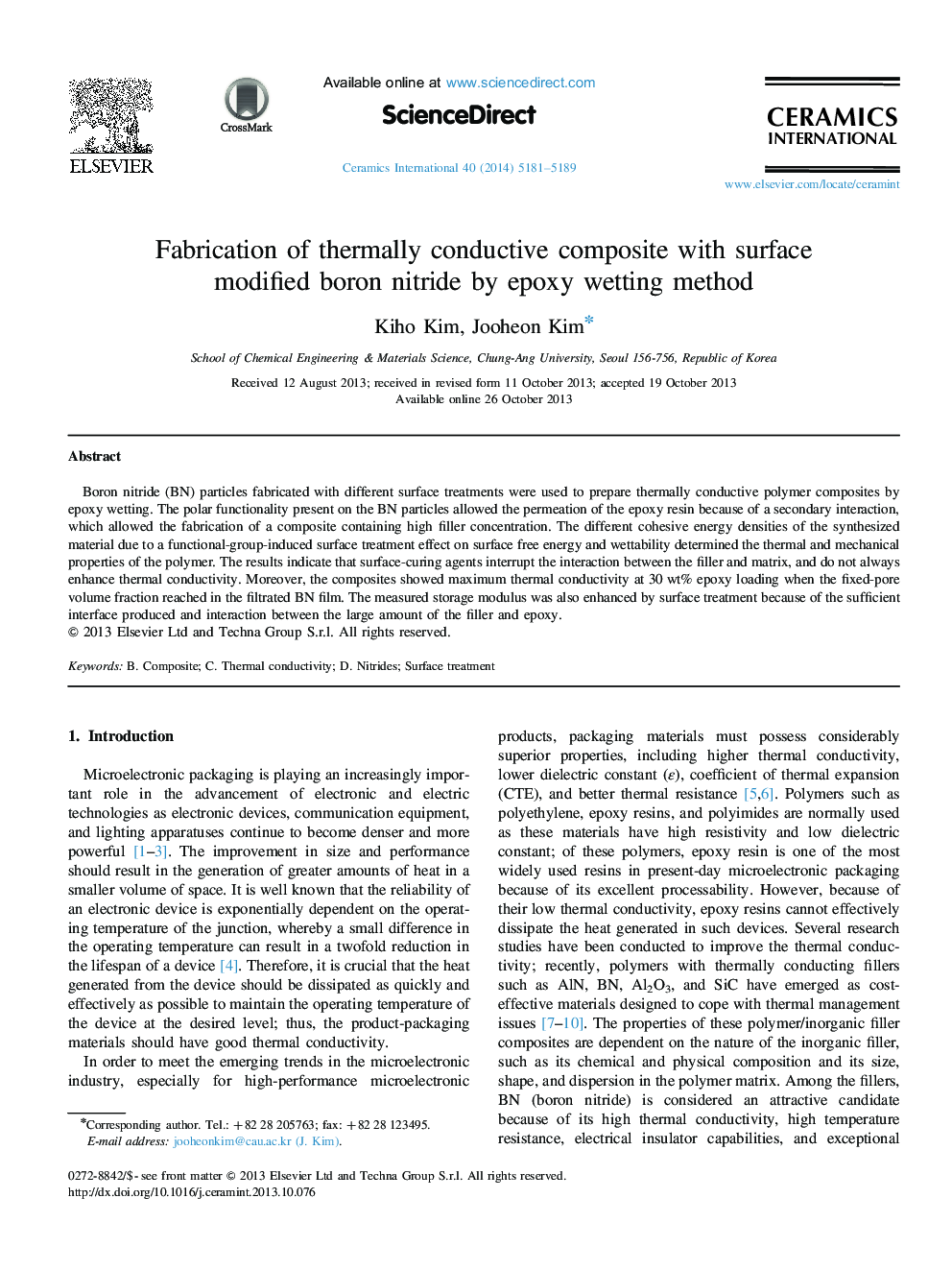| Article ID | Journal | Published Year | Pages | File Type |
|---|---|---|---|---|
| 10625681 | Ceramics International | 2014 | 9 Pages |
Abstract
Boron nitride (BN) particles fabricated with different surface treatments were used to prepare thermally conductive polymer composites by epoxy wetting. The polar functionality present on the BN particles allowed the permeation of the epoxy resin because of a secondary interaction, which allowed the fabrication of a composite containing high filler concentration. The different cohesive energy densities of the synthesized material due to a functional-group-induced surface treatment effect on surface free energy and wettability determined the thermal and mechanical properties of the polymer. The results indicate that surface-curing agents interrupt the interaction between the filler and matrix, and do not always enhance thermal conductivity. Moreover, the composites showed maximum thermal conductivity at 30Â wt% epoxy loading when the fixed-pore volume fraction reached in the filtrated BN film. The measured storage modulus was also enhanced by surface treatment because of the sufficient interface produced and interaction between the large amount of the filler and epoxy.
Related Topics
Physical Sciences and Engineering
Materials Science
Ceramics and Composites
Authors
Kiho Kim, Jooheon Kim,
